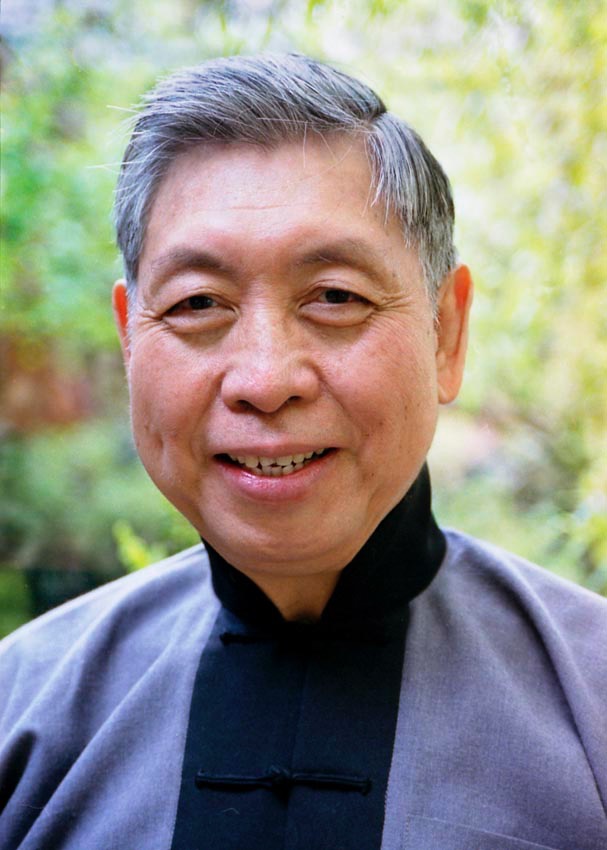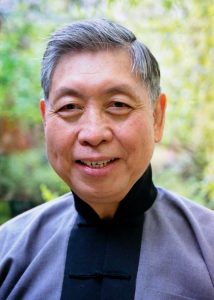My Autobiography
William C. C. Chen
My name is William C C Chen’ I am a disciple of Professor Cheng Man-ching (鄭曼青) who was known as a great grand master of Yang’s Style T’ai Chi Ch’uan. His five talents were: painting, calligraphy, poetry, Chinese medicine, and T’ai Chi Ch’uan. He started teaching painting, calligraphy and poetry in collage at the age of 18 and taught at several universities in China. As a result, people addressed him as Professor Cheng. It was an honor and a privilege to have Professor Cheng as my T’ai Chi Ch’uan master.
I was born in 1933 in Wenzhou, Zhejiang province, China, which is on the eastern coast. A US Passport error has my year of birth as 1935. I attempted to correct it fifteen years ago with the New York Social Security office but was told that it would be easier to go with 1935 since it is on my US passport. Hence, 1935 became my official birth year.
Professor Cheng and my father were born in 1900. After World War II we all relocated to Taiwan when the Communist Government took over China. In late 1940’s my father brought me to see his old playmate, Professor Cheng. He was very pleased to meet his childhood friend’s son. He asked if I would be interested in studying T’ai chi. I enthusiastically answered “Yes!” Soon I became his youngest disciple.
Beginning in the 1950’s I was assigned to assist Professor Cheng in his advance internal body training which is to absorb a punch while he is asleep. This intensive training was carried out three times a day early morning, noon and late in the evening. I arrived at his house early in the morning and did not leave until late at night. This gave me a great opportunity to understand Professor Cheng’s lifestyle and martial arts skill. Every day, I listened to his lectures and his answers to questions about T’ai Chi Ch’uan asked by students and visitors who streamed to his house. I realized there are many advantages of staying in the Master’s house.
A few months after the internal training started, his brick fence collapsed due to an earthquake and typhoon. He asked if I would sleep over in the rear training room to guard against intruders. I stayed in this room for almost three years. Professor Cheng and Mrs. Cheng were wonderful and warm. I was treated like one of their sons.
Life living in Professor’s house was the best rehab center. Mrs. Cheng was a very sharp and intelligent lady. She helped Professor to discipline my senior classmates. While living there, I learned to be very careful and considerate so that there would be no need for her to reprimand me. I made sure that my room was cleaned and neat, similar to that of a soldier living in boot camp.
Professor had five children, three girls and two boys. At the time, the girls were about ten, eight and six years old, while the last two boys were three and one-year old. First part of my training was to learn to listen to Professor and Mrs. Cheng’s guidelines. Then I had to learn how to get along and deal with their five children.
They were nice kids and treated me like an elder brother. There were a few times when they acted like army soldiers and ganged up on me. When I was able to neutralize the situation it felt like doing push hands. In a 1992 movie entitle “Pushing Hand”, the T’ai Chi master was able to root onto the ground, neutralize the attackers and ward them off to survive the conflict. It is the same in our daily life where we deal with issues, problems and conflict that we face.
I had a full schedule living in Professor’s house. Besides the internal training three times a day, every morning from 9 am to noon was patients’ visiting hours. I was the receptionist who welcomed them and collected payment before they left. There were many daily responsibilities but I always managed to practice on my own in the training room.
Learning from teaching, in 1950 I was Professor’s assistant and taught many private students at their home. In 1953, I began to teach T’ai Chi Ch’uan to the Postal and Telecommunications Administrative Agency of the government. I also taught another class in a branch of the Telecommunications Bureau. Soon after, I was also teaching at China Petroleum Company and Central Trust Bureau in Taipei. This kept me busy and earned me the title “Baby Master,” since all the people I taught were older than me.

Two years later, I went back to complete my high school education. I pursued school while still living at Professor’s home. With five energetic children around me, it was difficult to do my school work. Professor and Mrs. Cheng were pleased and agreed that it would be best for my education to return home.
Still, I went to professor’s house for Sunday push hand practice.
My classmates and other T’ai Chi players were very anxious to come and push me at Professor’s house. I was young and flexible. It was very difficult for them to push me. I never push them back because they were senior classmates but instead, for two periods of two years, I yielded and neutralized like a “Roly-Poly Doll” (不倒翁). Professor was very proud of me that I was able to follow the principle of “Investment in Loss”. My nick-named was the “Snake Waist Boy” (蛇腰) by the T’ai Chi Ch’uan community in Taiwan.
The First Lady of Taiwan, Madam Chiang Kai-shek (蔣介石), took painting lessons from Professor. Every Thursday, 3:00 pm sharp, a black sedan would be waiting at the door to take him to the President’s residence and then back in the evening. After Madam Chiang (蔣夫人) heard that I had left his house, she gave the Professor one of her German-shepherds to guard his house.
His children were not used to caring for the dog. I had to be there from time to time to clean up the dog’s mess. One day his dog gave birth, I had to spend the entire night there to help deliver the pups. There were nine pups but only seven survived.
My interest in T’ai Chi study is as a martial art. I began to compete in tournaments in 1954. That was the very first martial art competition in Taiwan. In 1956, the “Taiwan, Hong Kong, Macao Tournament” (台.港.澳.擂台賽) was held in Taipei. I was on the Taiwan team which competed with teams from Hong Kong and Macao. I advanced at the beginning but was eliminated in later rounds. Finally, I took second place in the light weight division in martial art competition in the “Taiwan State Olympics Competition” (台灣省運會) in 1958, Champion Boxer Kuo Chin-Fong (郭琴舫) was one of the Professor’s senior students and a regular visitor to the house. He loved the soft looseness of T’ai Chi which made it easy for him to yield and follow with a quick jab. It was like the T’ai Chi story of the “Snake overpowered the Crane”. I like his idea of practical fighting training with boxing gloves. I was very pleased that he offered his top student as my training partner. Without the Champ’s guidance and the training with his top student, it would have been difficult to win the second place in the competition in 1958.
My success in the 1958 competition helped me gain recognition among T’ai Chi Ch’uan enthusiasts in Singapore and Malaysia. Early in 1959, I was invited to teach T’ai Chi Ch’uan in Singapore, Kuala Lumpur and later in Bangkok, Thailand.
In 1962, I enrolled as a student in the University of Hawaii right after arriving at the paradise island of Oahu. There, I was approached by various Chinese martial arts experts for friendly matches. Within two weeks I was honored to teach the Honolulu T’ai Chi Ch’uan Association. I also gave group and private classes in the community.
During summer vacation in San Francisco in 1963, I gave a demonstration at the Chinatown T’ai Chi Ch’uan Club. As a result, I was asked to give lectures to the assistants as well as some masters. Dr. Lu Hui-ching, a noted instructor who had T’ai Chi Ch’uan studio on Teller Street, requested me to teach her and her friends, and later, I was also teaching her advanced students. She wrote a book called “A Manual of Instruction on T’ai Chi Ch’uan” in 1974, giving me credit for my instructions.
In the mid-sixties T’ai Chi Ch’uan started to gain momentum in New York City.
The slow unhurried movements of T’ai Chi Ch’uan are a great therapy for people residing in stressful cities like New York. The more T’ai Chi players practiced the movements the healthier and happier they felt. Before long, there were T’ai Chi classes at the United Nations and in Chinese organizations in Chinatown. As T’ai Chi popularity grew, numerous clubs and studios were offering classes. There were T’ai Chi players in the parks as well.
In 1965, Professor wrote me several times, asking me to teach in Springfield, Mass., and at the United Nations, in New York City. After my arrival in New York, I turned the Springfield offer down because it was too far away. I also decided against teaching at the United Nations because it would have meant depriving someone who was already there of his position.
It was with Professor’s blessing that one of his top students, Maggie Newman offered me her dance studio on 23rd Street, in the Chelsea area. She even offered to continue to pay the rent for me. Fortunately, the studio income covered the rent. I will always remember her generosity and kindness. She is always our “Guest of Honor” at our Annual Chinese Celebrations dinners.
When I first arrived in the New York City, I was very busy running around with Professor to assist his classes in Chinatown, my own classes on 23rd street as well as studying at New York University. A short time later, Professor had several students who were enthusiastic to assist in his classes. They later named themselves “The Magnificent Seven.” It gave me more time to teach at my own studio and develop my own classes. I first named my studio T’ai Chi Ch’uan School, Inc. Later, it was changed to “William CC Chen School of T’ai Chi Ch’uan.”
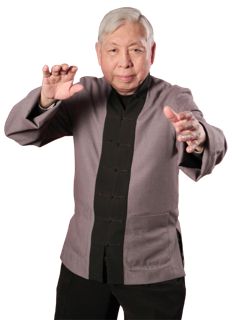
I assisted Professor in his internal training for about a year and a half. After I returned back to my home, I applied the internal training to myself which enabled me to absorb punches in body in free fighting and also in public demonstrations. As a result of this training, I was able to take very powerful punches from many martial artists throughout the years. Among those who punched me, he was world-renowned Karate Grandmaster Fred Hamilton and the Karate Champion Chuck Norris who punched my stomach at the “Oriental World of Martial Arts” in New York City in the late 1960’s.
In 1969 I got married in New York City. Professor and his family attended my wedding. I was much honored that Professor Cheng and Mrs. Cheng stood in as my parents. The wedding was very successful, as is our marriage.
Now I have a family of four: Priscilla, my wife, Tiffany, my daughter and Maximillion, my son. Priscilla and I not only raised our children together, but she and I also manage the affairs of our T’ai Chi School. Priscilla performed the T’ai Chi Movements on the Johnny Carson Show in the 1960’s. In the 1990’s she won the gold medal in Baltimore, MD. In 2000, she won the bronze medal in push hand in the ladies’ division at the “4th Chung Hwa Cup International Tai Chi Chuan Championship.” in Taipei, Taiwan.
Tiffany is the undefeated national and international T’ai Chi Push-Hands Champion. She was the 2003 San-Shou (Chinese kickboxing) Champion held in Brazil. She was also presented with a Special Award for the “Best Lei Tai Performance by a Female Athlete” of the World San-Shou Championship in Brazil. In recognition of her achievements and competitive spirit, Inside Kung-Fu magazine named Tiffany to its 2004 Hall of Fame as the Best Competitor of the Year. In 2005, she won the silver medal in the 8th World Wushu San-Shou Championship in Hanoi, Vietnam. Tiffany was Inside Kung-Fu magazine’s 2011 Hall of Fame “Woman of the Year.” In 2012 she won the silver medal in the New York State Golden Gloves.
Maximillion Chen was the West Coast, East Coast and US Champion in Chinese San-Shou competition. In 2005, as a member of the USAWKF Chinese Martial Art San-Shou Team, he received the bronze medal at the 8th World Wushu Championship in Hanoi Vietnam. He won the bronze medal as well in 2007 at the 9th World Wushu Championship in Beijing. At the 2008, he represented the USA team in the Olympic Games in Beijing, China, competing on August 8th as a member of the U.S. team in the Chinese Martial Art San-Shou competition.
For the public’s acceptance that I have received in the United States I should thank many people. Among them was one of my classmates, Robert W. Smith, whose book “Chinese Boxing: Masters and Methods” contained a chapter about me. Another was Aaron Banks, one of the greatest martial arts promoters in New York City. He invited me to give exhibitions starting with his very first of the Oriental World of Self-Defense in 1967, and for many subsequent years.
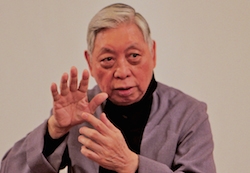
An article published in the August 1968 issue of Black Belt Magazine, Bronson Dudley called me “The Barnum of Brawl.” David Cater, who was the long time editor of Inside Kung-Fu Magazine, published numerous articles about me. As well, articles written by award winning, Writer of Year, Robert Dreeben. A respected Professor of Mathematics, Dr. Benjamin Fusaro, whose endorsement resulted in an invitation by West Point, United States Military Academy for me to give an introductory Tai Chi Chuan seminar to their cadets and officers on April 21st 1988. All of the above people and events opened doors for me and Tai Chi Chuan. Each demonstration and article bridged gaps as it paved the way for acceptance of Tai Chi not just in America, but all around the globe.
T’ai Chi Ch’uan is an internal martial art system as well as an inner body exercise dealing with inner energy (qi) flow. The inner energy flow is directed by a feeling from the heart. As the awareness of the feeling gradual increases the slow motion of the fingers guides the palms outward and upward as the toes gently press downward. ƒThe soft slow motion of the movements is like Hawaiian hula dancing. I call the motions of T’ai Chi Ch’uan “Fingers Dancing with the feeling of the mind”.
When the feeling suddenly intensifies, the swiftly flowing qi triggers the fingers that drive the knuckles out for a punch. This is an energy (qi) punch without activating muscle tension. The fighting art of T’ai Chi Ch’uan applies the inner energy (qi) for action while the muscles are used to help sustain the impact and provide support to meet the resistance. To be a good martial art fighter, he or she must fight. There is no shortcut. The same applies to the push hands.
At the age of 83, I profited from the slow motion of Tai Chi Chuan, which alleviates stress and promotes the energy (qi) flowing throughout the body. It optimizes my metabolism and enhances the respiratory system. This keeps my body going like when I was in my 60’s, which enables me to teach and share the profound art of this Chinese martial practice as well as an excellent cardiovascular exercise. I am lucky that the Tai Chi Chuan gives me a wonderful life.
Author: GM William C. C. Chen
Images: William C. C. Chen, Loni Liebermann and Nils Klug
Videos with GM William C. C. Chen
Tai Chi Punches
Interviews with GM William C. C. Chen
Articles by GM William C. C. Chen
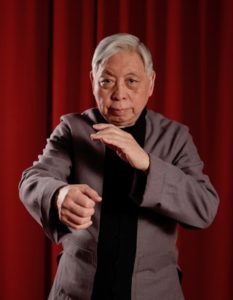
Tai Chi Chuan, literally meaning “Grand Ultimate Fist,” is one of the most sophisticated Chinese fighting arts. It is a masterpiece of neurophysiology as the brain connects with the fighting devices of the fingers and the toes for punches and kicks. The desire force of Yi毅(力) in the brain amplifies the energy cell of Qi氣 by passing through the acupuncture channel “Spleen 21” to animate fingers and toes into an action. The interrelationship of these invisible elements – the brain Yi developing the Qi in the fingers and toes to create the desired moves – is the result of the slow movements…
The ancient Chinese martial art of Tai Chi Chuan is the perfect callisthenic for today’s seniors. The relaxed and unhurried movements help alleviate nervous and muscular tension. Tai Chi Chuan lubricates joints and promotes automatic body alignment for better control of balance, helping to prevent the instability that can lead to falls…
Tai Chi Fingers as a Work of Art

The slowness of Tai Chi Chuan gives me a clear, understandable signal and a better sense of the interior movements in my body‘s interior moves. There is a strong connection between fingers, big toes and inner thighs, all of which work together as a unit. I am blissful that I have been teaching and learning this sophisticated art of the slow movements on a daily basis for over 60 some years…

